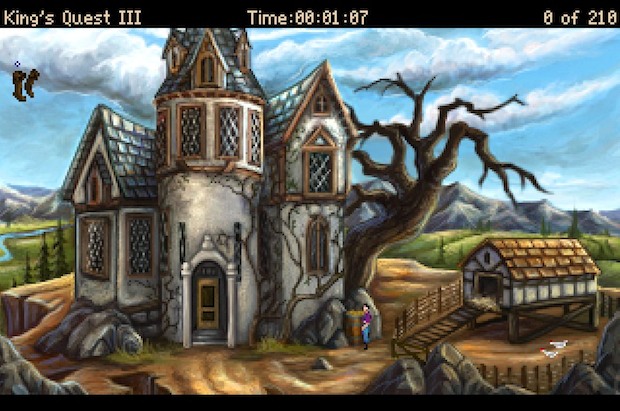QUEST (kittenm4ster) Mac OS
The default screen resolution for Mac OS X VirtualBox Guest is 1024×768.
Below shows how to change the screen resolution of Mac OS VirtualBox guest running on Windows 10.
Quest (kittenm4ster) Mac Os Download
Microsoft is piloting Mac OS support for its social service AltspaceVR. The test is “intended to help us better understand the feasibility of expanding AltspaceVR to Mac OS” and you can give.

Quest (kittenm4ster) Mac Os X
Welcome to the “Titan Quest – Anniversary Edition” for Mac game page. This page contains information + tools how to port Titan Quest – Anniversary Edition in a few simple steps (that even a noob can understand) so you can play it on your Mac just like a normal application using Crossover. Ancestral Quest Basics for Mac is a fully functioning family tree program, and is absolutely free. Download the 64-bit version for Mac OS X High Sierra, Mojave, Catalina, Big Sur and later. Download the 32-bit version for earlier versions of Mac OS X. Hello, I would like to know whether I'll be able to develop for Oculus Quest using a Mac OS X workstation. MyQuest is a free and secure tool that makes it easy to get your test results, schedule appointments, track your health history, and more, all in one place.
Steps
1. Open “Command Prompt”. (press Win + x and select “Command Prompt”)
2. Navigate to VirtualBox folder in which “VBoxManage.exe” resides.
e.g.)
3. Set resolution by typing the command below.
The third parameter (i.e. “High Sierra”) should be your VM name.
4. Start the VM
References
[1] Fix VirtualBox macOS High Sierra Screen Resolution (1920×1080 – 4K – 5K)
How it works:
-
- Centralized, unattended image deployment
- Reduce the time and effort required for deployment and eliminate the need for boot and image disks — even for bare-metal build-outs — by provisioning stored images over the network from the KACE Systems Deployment Appliance’s centralized library. Remotely deploy assembled packages to any network-connected system from the web-based administrative console or locally from a boot menu generated by the KACE SDA.
- K-Image format
- Easily edit computer and server images, eliminating the need to rebuild images. Single-instancing technology minimizes the time, bandwidth and storage required to capture and archive disk images, while efficient state management allows for lightning-fast system imaging by bypassing redundant file transfers and applying only the most recent updates to the original image. Execute fully automated bare-metal system build-outs with the KACE SDA’s agentless feature.
- Improved deployment reliability
- Reference all images, network OS installations and related assets from the centralized deployment library. This improves deployment reliability and saves you valuable time by ensuring that you don’t inadvertently deploy an outdated disk image or script installations to systems.
- USB and CD support
- Easily boot remote systems locally to the KACE boot environment (KBE) on a USB drive or from a CD. This feature allows you to connect to the centralized KACE SDA or KACE SDA Remote Site Appliance to gain access to the full deployment library, and then execute any defined deployment tasks on the target system. This convenient option can also be implemented when a KACE SDA is not accessible or when it's impractical to deploy the KACE SDA Remote Site Appliance. Include a K-image along with the KBE on the USB drive for a fully stand-alone installation when a reliable internet connection is not available.
- Automated deployment configuration
- Reduce IT effort and improve accuracy with complete remote configuration for pre- and post–deployment tasks that automate the complete deployment lifecycle. Create your own pre- and post-installation tasks, or take advantage of convenient built-in tasks for easy deployment automation.
- Hardware-independent software deployment/system imaging
- Save time and simplify the installation of operating systems across your network by easily provisioning your PC fleet with the KACE SDA. Install software remotely and maintain up-to-date gold master images across diverse hardware platforms. Use existing images to provision one-off machines to serve specialized functions. The KACE SDA’s network OS-scripted installation capabilities enable hardware-independent PC provisioning of systems by deploying a standard Windows setup from scratch over the network.
- Windows driver library
- Quickly find the correct drivers for all your hardware and operating systems. The driver detection process verifies driver compatibility with designated operating system installations. Easily add and remove driver files to the driver library. Quickly upload all drivers for any known valid system on your network to the KACE SDA.
- Driver updates
- The KACE SDA provides the tools to import Dell™ drivers directly and to capture other vendors' drivers, which minimizes the need to hunt for drivers on the internet while ensuring that the appropriate drivers are available for all your OS deployments. The KACE SDA driver feed functionality will download and organize drivers by computer model.
- Automated driver slipstreaming
- Simplify image deployments and scripted installations by automatically including the correct drivers. Prior to deployment, quickly verify whether all required drivers reside in the vast, prebuilt KACE SDA driver library, and easily add any missing drivers to the library to automatically include them in deployments. Increase system reliability and ease of deployment with driver verification reporting and automated slipstream updates of drivers.